Want to reduce the environmental impact of your tiny house project? Reclaimed lumber is for you!
There’s no substitute for the warmth and ambiance of wooden architecture, especially when you’re using reclaimed lumber. Every knot, notch and nail-hole tells a story and adds to the richness of your project. Plus you get to tell your friends all about it when they come over for a visit.
(The natural builders at Dancing Rabbit Eco-village figured this out a long time ago. If you want to see some of the handiwork featured in this article firsthand, consider paying us a visit through our annual visitor program.)
The best part is: reclaimed lumber is environmentally sustainable because it doesn’t come with the baggage of embodied pollution, worldwide deforestation and species extinction. (The spotted owls offer their hearty thanks.) Not to mention you can often buy it at rock-bottom prices, on a barter-trade basis, or even for free. In short, reclaimed lumber is the perfect compliment to other natural building techniques and materials you can incorporate into your design.
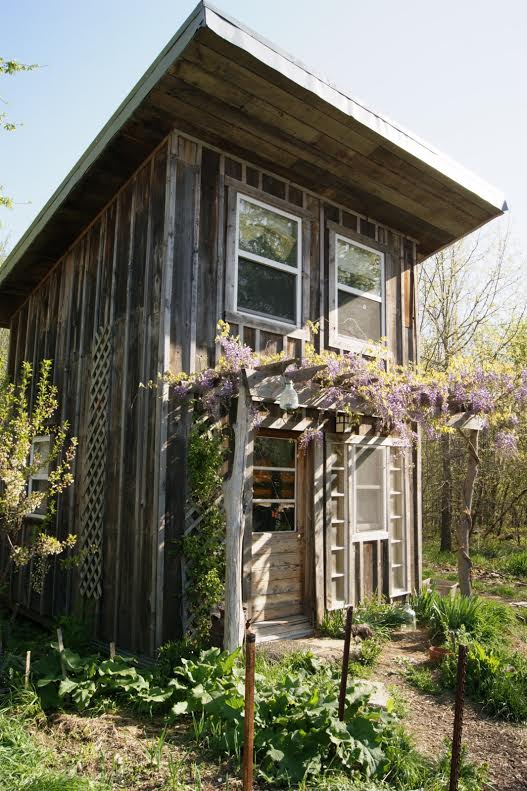
It’s structurally sound, as well. Lumber used in past decades, (even centuries,) was often milled from wild-harvested trees, so the woodgrain is tight and the fibers are nice and dense. You can also be sure the wood is dry and well-seasoned, provided that it hasn’t been exposed to the elements.
You won’t find any at your local home improvement uber-store, however, so here are the Tiny House Blog top 10 tips for sourcing reclaimed lumber for your special project.
10. Rural Demolition

Let’s start with the granddaddy of them all: rural demolition.
Most of the reclaimed lumber used at Dancing Rabbit was sourced from local barns and old homesteads that had outlived their useful lives. Unfortunately, these historical treasures are often regarded as eyesores, so they end up being bulldozed and trucked to landfills, or even just burned down.

Take a trip to the countryside around your area and make some friends. Chances are it won’t be long before you learn of an old farmer or homesteader who is looking to get rid of a dilapidated barn or the like. They’ll likely give you a good price if you offer to come do some of the labor yourself, and they might even be willing to let you have it for free.
9. Urban Demolition
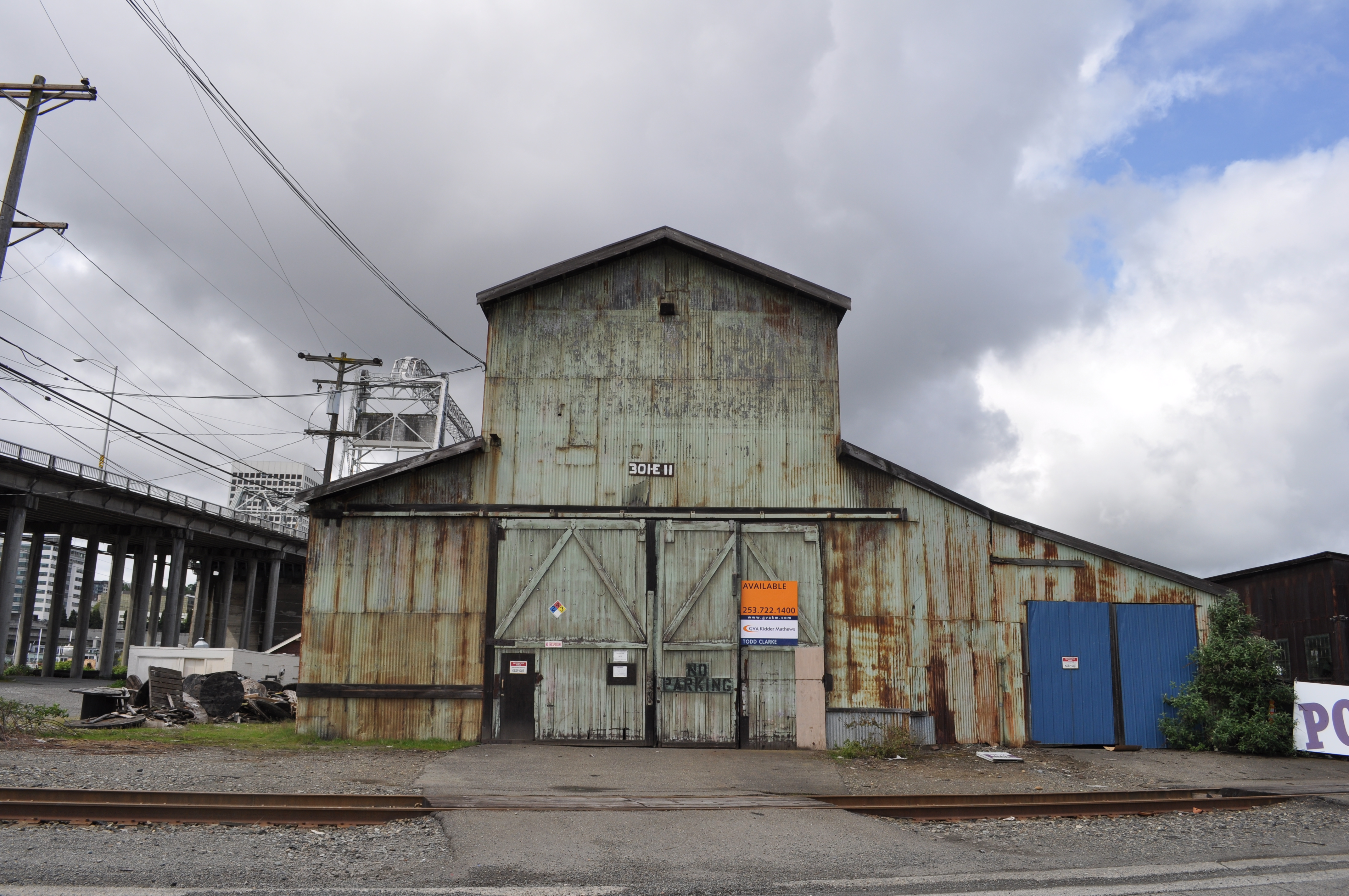
You don’t have to venture out into the middle of nowhere to find reclaimed lumber. Urban centers around the country almost always have an area full of abandoned warehouses and factories, bowling alleys out of operation, closed schools and old store fronts that no longer see any business. The decline of Main Street America is a sad tale, but when you’re looking for reclaimed lumber, it can work out in your favor.
If you see a promising prospect, call your local tax assessor and find out who owns the building and how to contact them. Do your legwork and you may land a good deal on some primo hardwood flooring, structural beams and other lumber materials.
8. Boat Demolition

People who live along the coast and major rivers have a unique resource in the availability of reclaimed boat lumber. Throughout the country, the mom and pop fishing industry is on the decline and when those old vessels have seen their list voyage, they often just get dragged ashore and are left to rot.
Take a look around your local waterfront and see if you can locate some of these old vessels and give them a new home with you, even if only in bits and pieces.
7. Construction Waste

New construction always generates a lot of waste wood materials. Offcuts from framing and envelopment materials can make for excellent sources for reclaimed stuff.
If you’re looking for sheet goods in particular, contact local concrete contractors. Generally, plywood can only be used once in a concrete mold, so it just gets thrown away.

Often times contractors order more than they need for projects as well, and sometimes, if they don’t have another job lined up immediately, you can get brand new materials at a deep discount.
Another good resource is your local community theater. Whenever a production ends they are left with scraps from various sets and backdrops used in performances. They’ll reuse them if they can, but often times they just have to throw things away. If you’re lucky, you’ll get a real work of art that you incorporate into your tiny house design.
6. Factory Offcuts
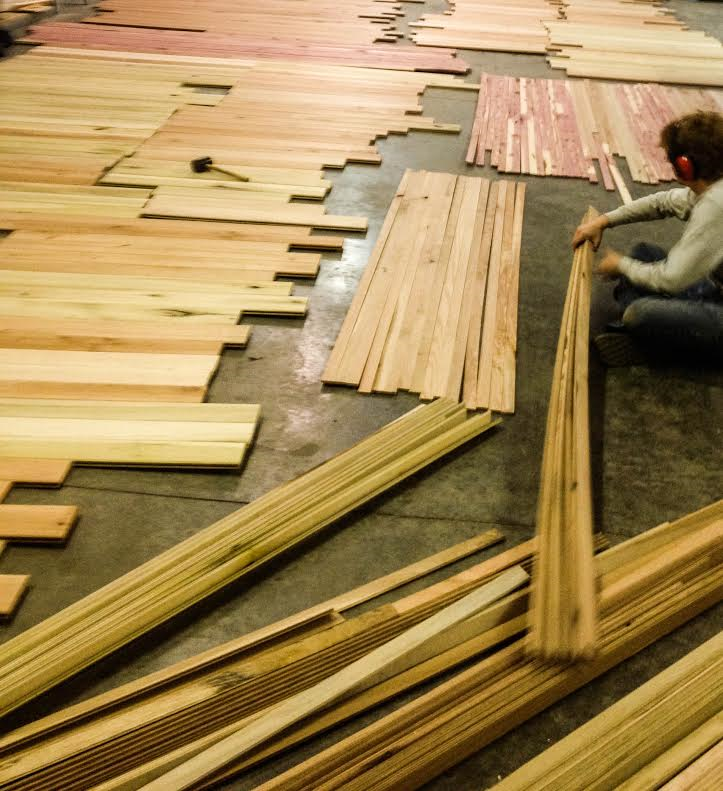
There’s a factory near Dancing Rabbit that makes high quality oaken furniture, and they generate huge quantities of offcuts – it’s cheaper for them to buy in new wood than it is to bend over backwards to use scraps. It’s kiln dried, planed and squared off. This sort of thing could be perfect for you, if you can find a creative way to utilize small pieces of irregular size.

We also have access to a nearby modular panel factory that buys enormous sheets of oriented strand board. They sell good-sized offcuts for pennies.
Check your local listings for factories and manufacturing facilities and see if there is a way that you can purchase something from their waste stream. There is a possibility that you strike an excellent deal.
5. Industrial Waste

Other kinds of industrial waste can be useful as well.
Railroad ties, telephone poles, whiskey barrels – you name it. Everything has to be replaced eventually, and all you need to do is apply yourself with a little time and energy to figure out a way to work it into your plans.
(Who wouldn’t want a set of window seats that smell like bourbon?)
4. Shipping Waste

No matter where you live in the country, shipping crates, skids and pallets are ubiquitous. They aren’t the highest quality wood, but a little tender loving care can turn them into something useful, practical and beautiful. You can’t beat the price, either.
3. Salvage Yards and Specialty Dealers
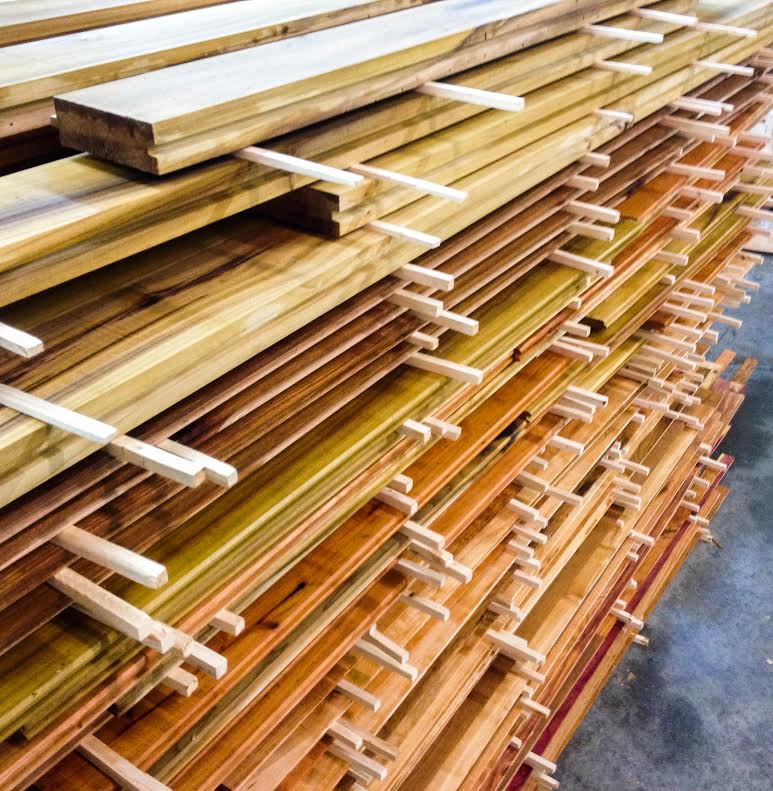
If you’re lucky, there will be a local business owner in your area who has already figured out all the regional sources for reclaimed lumber and they’re operating a salvage yard. Give them a call and see what they have on hand. You’ll pay more than you would if you were collecting the materials somewhere yourself, but they will save you tons of time, blood, sweat and tears.
If you’re unlucky and there isn’t a salvage yard in your area, then it sounds like you just found your next career opportunity.
2. Ranch Clearing

Throughout the American west and the fly-over states, there are rural land owners who are clearing space for agriculture and animal husbandry.

It’s an environmental disaster, but an excellent opportunity for folks in search of reclaimed lumber – especially if you’re looking for non-dimensional materials. Sometimes the natural, free-flowing curves of uncut timber can add tremendous aesthetic value to your home, and if you’re using it for round-wood timber framing, it’s stronger than dimensional lumber, too.
1. Online Sources
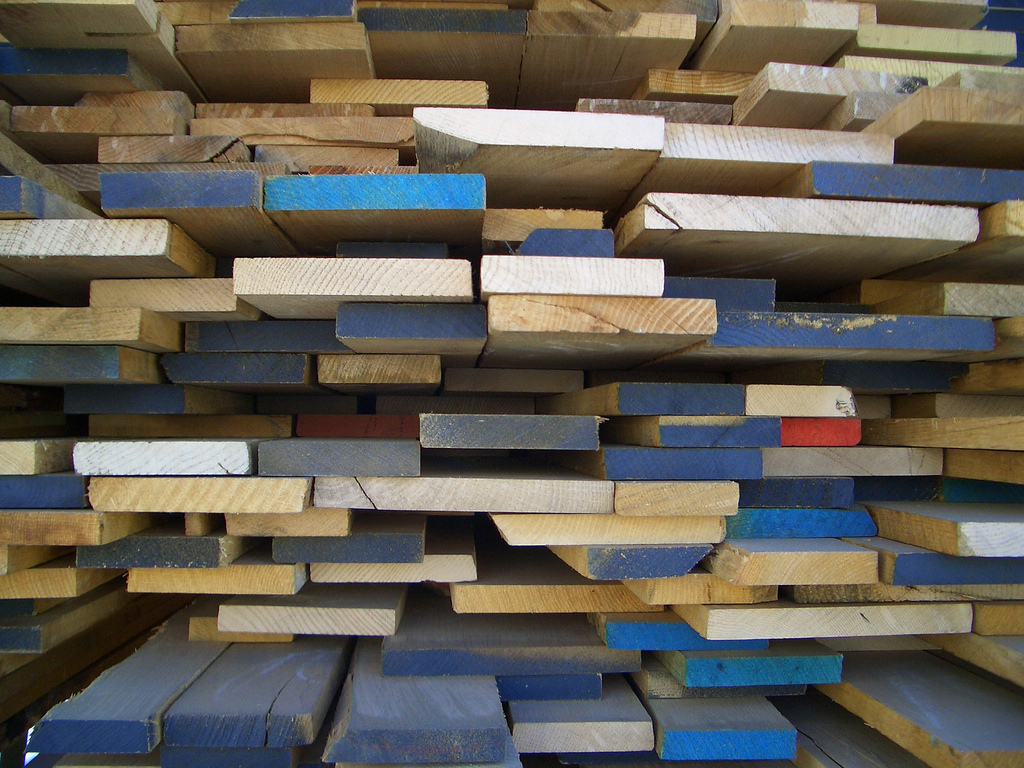
You knew this would be on the list. We live in the information age, where everything in the world is available at a moment’s notice with the push of a few buttons.
Depending on the form and quantity of lumber you need, there are some great opportunities to be found online for reclaimed wooden materials. Check your local Craig’s List, Etsy, Ebay – you know where to go.
This approach is particularly handy if you have specific needs for a particular kind of wood for your project, such as black locust for rot resistance, or poplar for a super-straight wood-grain, or whatever the case may be.
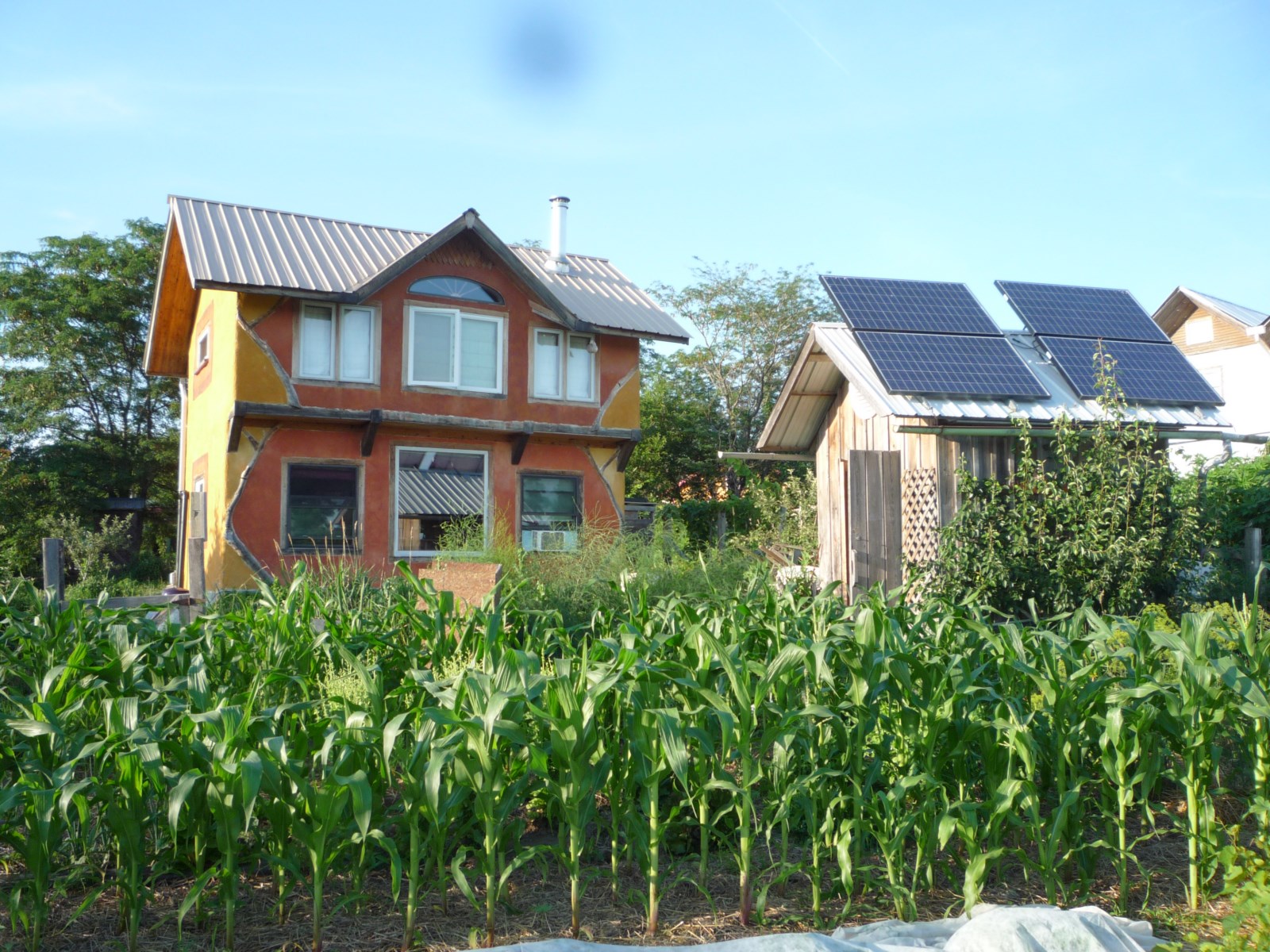
If you’re still looking for more insight into how to find reclaimed lumber for your project, I invite you to take a moment to consider the Dancing Rabbit visitor program. We have several natural builders in our community who can help you meet your needs in the way that’s best for you, as well as for the environment. Check out the different ways you can spend some time with us at this page.

It is great to reuse in general, but always do some research into the source of your materials. Discarded wood from many industrial sources can be contaminated with a variety of chemicals or metals. Don’t rush to hang an old pallet in your house before finding out what was stored on it.
Also, it taking material from older sites, be careful of lead based paints that often chip away. Not something you want a toddler gnawing on.
Good reminder to be careful of older material. You definitely don’t want to bring lead based materials around your home. Thanks!
I think that it’s really cool how people can use salvaged barn wood to build new things. My sister has been talking about buying old barn wood to make a table. I wonder where she looks to try and find old wood, it seems like it’d be difficult.
It is interesting how much these types of building materials can be recycled. Is this pretty helpful for the environment? I’m sure that it can save a lot of money. Do you happen to have any tips specifically for recycled concrete? This is something that would be really helpful for a project that I have in mind. Thank you!
I want to build a shed in my back yard, but I don’t have the lumber for it. It’s nice to know that you can get recycled lumber like this! I like that it never goes to waste this way.
I think it’s wise to consider the time and effort you can save by using a lumber yard, like you said. It’s important to balance our expenses for these types of things with the return we get from time saved. Lumber yards provide a good solution for both of those things.
My husband and I are looking to renovate our porch, but since we are a very green family, we only want to use reclaimed wood. So thank you for mentioning that a lot of contractors only use plywood for a concrete mold and then they can’t use it again. We’ll definitely be planning on checking out a construction company near us so we can reclaim that wood for our porch.
Thanks for mentioning that reclaimed lumber is environmentally sustainable. I have been wanting to build a shed in my backyard, and I am a bit of an environmentalist. Perhaps I should look into timer salvage as an option for material in building my backyard shed.
I know this is a little unique for the tiny house blog, but don’t forget about concrete. Concrete is simply a mixture of sand, water and cement which can still look beautiful and be environmentally easy. Plus it lasts for a long time when done correctly!